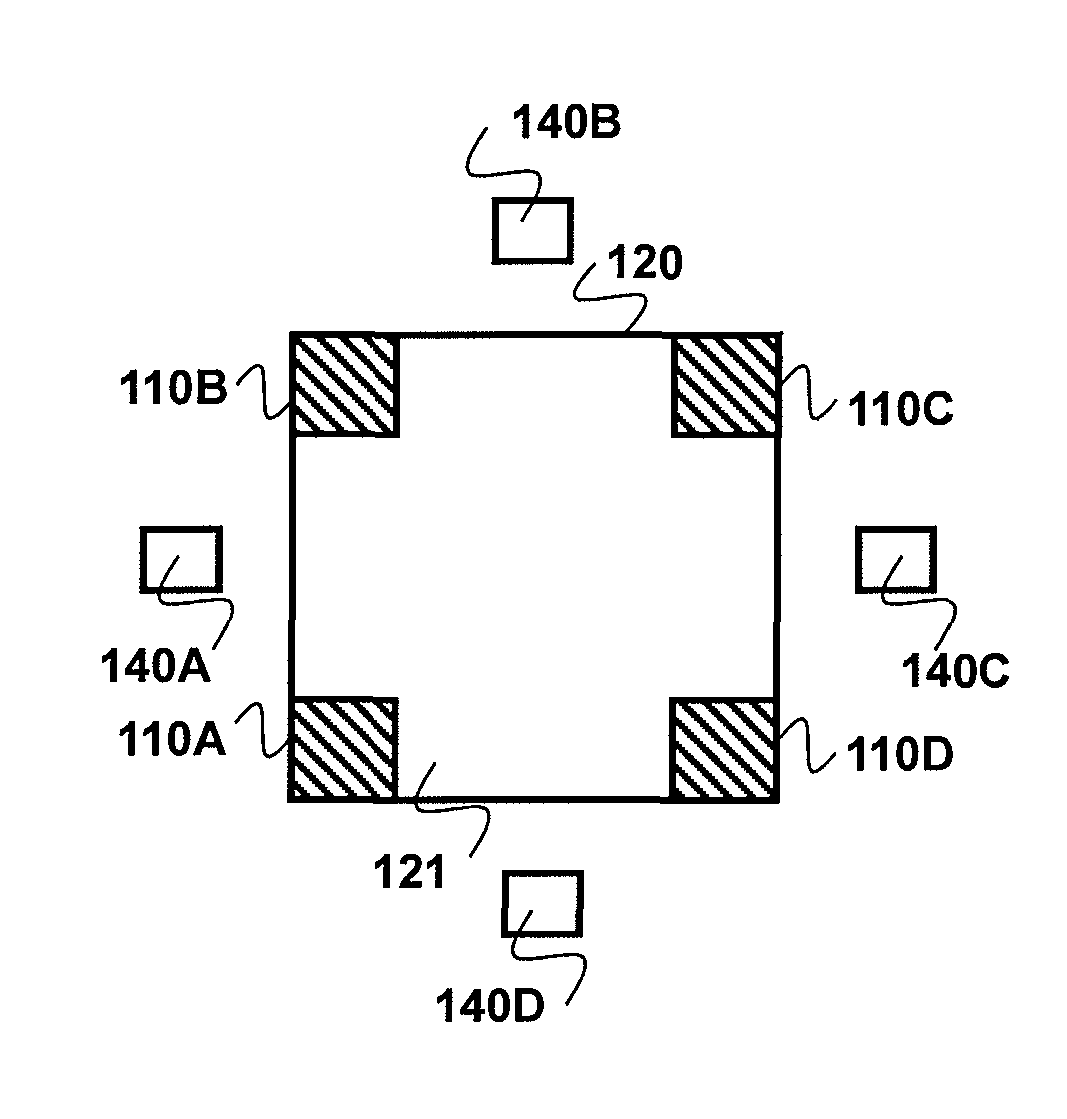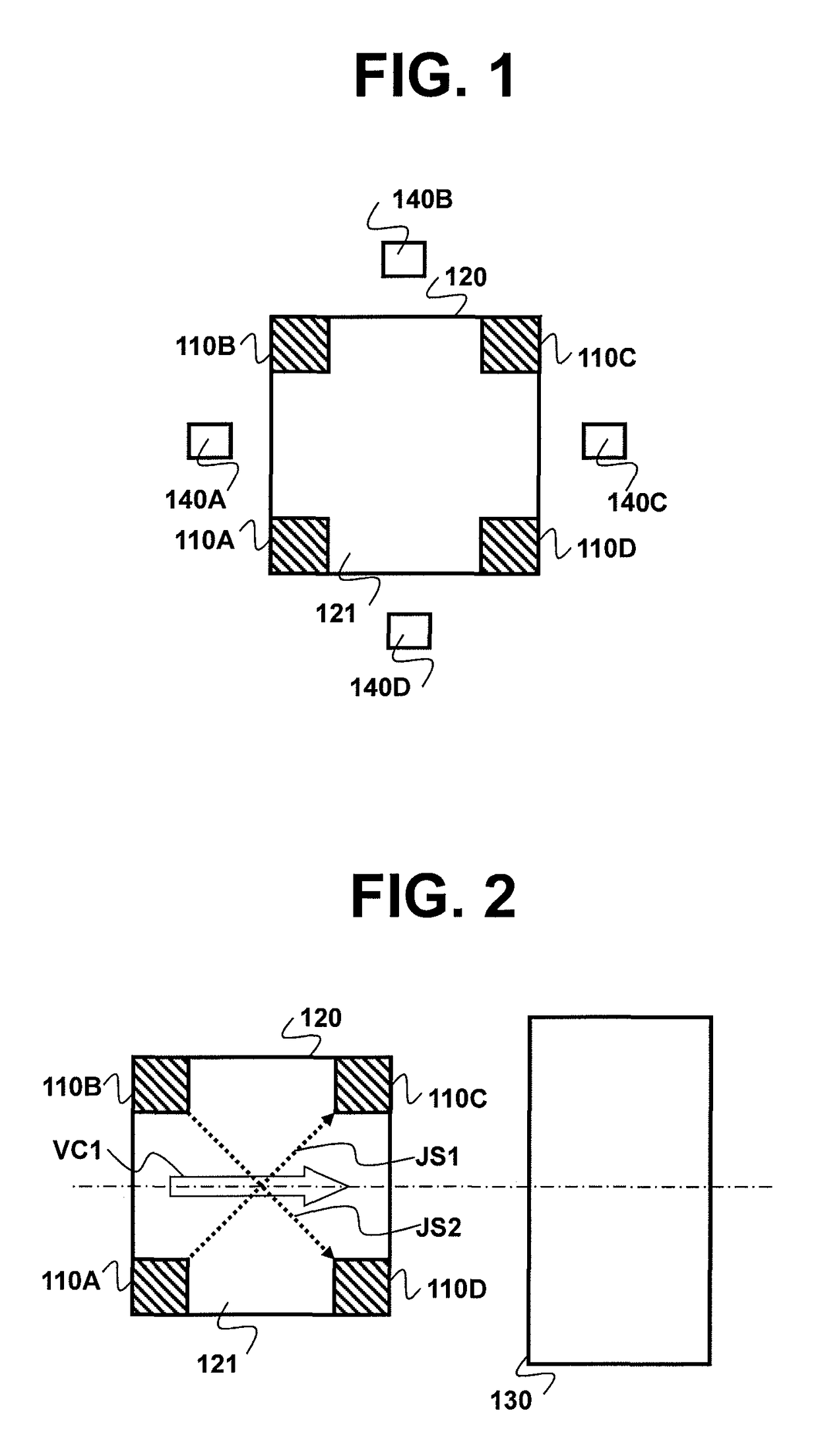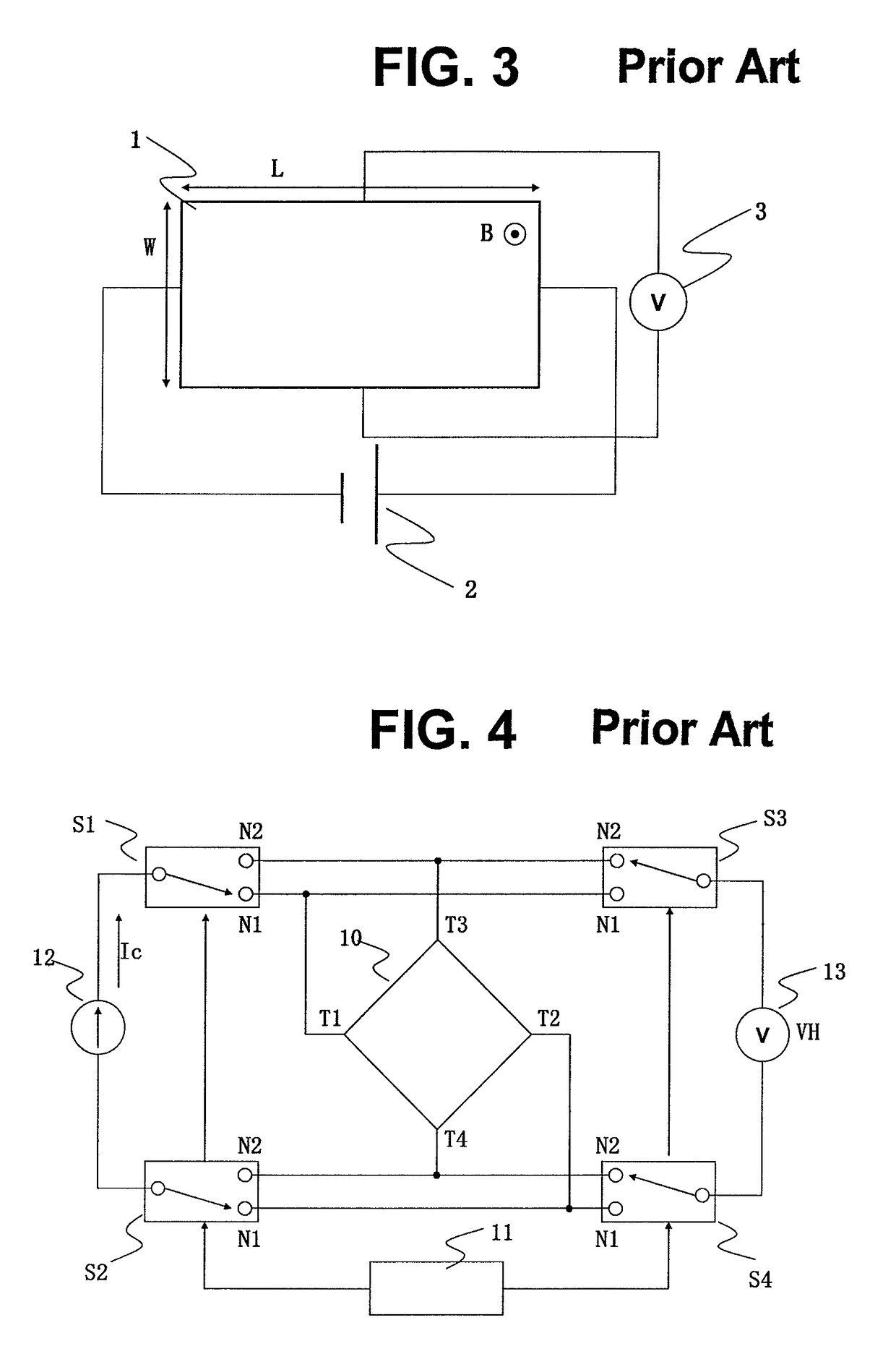Hall sensor and compensation method for offset caused by temperature distribution in hall sensor
a temperature distribution and sensor technology, applied in the field of hall sensors, can solve the problems of increasing chip size, low resistance, and inability to completely cancel the offset voltage, so as to reduce the chip size, reduce the cost, and reduce the distance between the heat source and the hall element.
- Summary
- Abstract
- Description
- Claims
- Application Information
AI Technical Summary
Benefits of technology
Problems solved by technology
Method used
Image
Examples
Embodiment Construction
[0034]A detailed description is now given of an embodiment of the present invention with reference to the drawings.
[0035]FIG. 1 is a plan view of a Hall sensor according to the embodiment of the present invention. The Hall sensor includes a Hall element for sensing magnetism and a circuit for driving or controlling the Hall element.
[0036]First, a description is given of a plan shape of the Hall element. As illustrated in FIG. 1, a Hall element 120 includes, on a semiconductor substrate, a magnetism sensing portion constructed by a square N-type doped region 121 and control current input terminals and Hall voltage output terminals 110A, 110B, 110C, and 110D constructed by N-type highly-doped regions having the same shape, which are arranged at respective vertices of the square magnetism sensing portion. The Hall element 120 is shaped into the square, resulting in a symmetrical Hall element having four axes of symmetry.
[0037]Further, temperature sensors 140A, 140B, 140C, and 140D are ...
PUM
 Login to View More
Login to View More Abstract
Description
Claims
Application Information
 Login to View More
Login to View More - R&D
- Intellectual Property
- Life Sciences
- Materials
- Tech Scout
- Unparalleled Data Quality
- Higher Quality Content
- 60% Fewer Hallucinations
Browse by: Latest US Patents, China's latest patents, Technical Efficacy Thesaurus, Application Domain, Technology Topic, Popular Technical Reports.
© 2025 PatSnap. All rights reserved.Legal|Privacy policy|Modern Slavery Act Transparency Statement|Sitemap|About US| Contact US: help@patsnap.com



